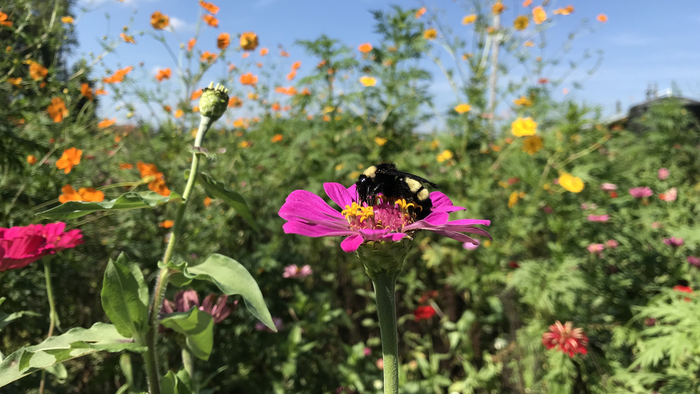US bee conservation project shows some success
As bee populations are declining worldwide due to habitat loss, pesticides and pollution, a three-year conservation project has seen some success in promoting bee abundance.
The project, based in North Carolina, saw the creation of pollinator habitats to help increase and diversify bee populations, with pollinator-friendly flowers on 16 research stations.
North Carolina State University researchers found the quality of habitats and habitat maintenance played a key role in this, as they measured the effectiveness of flowers in promoting populations.
With research stations stretching out from mountains to coast between 2016-2018, researchers visited the sites four times each year, catching bees in nets and cups – called bee bowls – which were painted to mimic the UV reflection of flowers.

Overall, they collected more than 16,000 bees from 128 different species, with bee abundance increasing over time as more bees were collected in 2018 than in 2016. Bee diversity also improved in 2017, before dropping slightly in 2018.
‘We were really happy to see increases in the abundance and number of bee species found over time,’ said Hannah Levenson, a postdoctoral researcher scholar and corresponding author of the study. ‘It was also exciting to see how many species we documented, especially for studying one kind of habitat. This study was limited to agricultural areas but we still found nearly 130 bee species.’
The quality of flowers was found to be a key driver of bee abundance and diversity, with areas with higher flower quality attracting more bees than poorly maintained areas with degraded flowers, weeds and grasses.
Levenson added: ‘North Carolina has 564 species of bees and they have very different life cycles from each other. Some are active in early spring when flowers are just starting to come up. Other species are active in summer. The end of summer is when most bee species are active but have the fewest resources available – it’s called the dearth. So it’s important to develop seed mixes that bloom across the seasons so we can support as many of North Carolina’s bees as possible.’
Some surprising results cropped up in the study, with specialist bees showing up in unexpected places, like squash bees found in areas with no squash plants.
‘It is encouraging that these planted habitats can provide some level of support to specialist species such as this that are economically important pollinators,’ said Levenson.
‘We also found a particular bumble bee – Bombus pensylvanicus – that is under review for potential addition to the endangered species list.
‘We found a high abundance of them, so it’s possible that they’re attracted to agricultural areas more than other areas. We submitted the data to Fish and Wildlife so it can be used to help make the decision on whether it should be listed as endangered or not.’
The research team are hopeful further studies will take place in different habitats, like forests and urban areas, to get a wider sense of bee populations and what can support them.
Photo by Hannah Levenson















